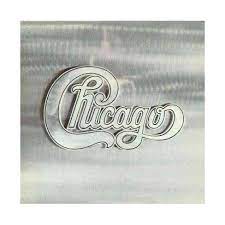It’s been called the “blueprint for Blue-eyed soul” as well as the starting point of “soft rock.” Quite a legacy, no matter what your opinion of those two “genres” is (and here, we like both just fine.) There could be debate aplenty as to what record, if any one did, merited such accolades, but definitely Van Morrison‘s Moondance, of which that was said, is a contender. It came out this day in 1970.
Moondance was Van’s third solo album, but second on a big label, Warner Bros., and it came out just over a year after its first, Astral Weeks, to which it seems to always be compared. Astral Weeks had been loved by critics, but generally totally ignored by record buyers, much to both Van and Warner’s dismay. So Van the Man decided to change things up a bit rather than record a direct, folky sequel. He brought in a horn section, wrote some songs that were a bit more upbeat and at times jazz-tinged, and took over producing the record himself. “No one knew what I was looking for except me, so I just did it,” he said about that. “When I go into the studio, I’m a magician. I make things happen.”
He did that with the ten song effort. It was written and recorded in the summer of ’69, a happy time for Van. He was in a state of “domestic bliss” with his first wife Janet. They were living in the Woodstock, New York area (surprisingly he left the area by the record’s release, finding it becoming too busy for him after the famous concert nearby) and taken by the natural beauty of the Appalachians. Many critics have noted how most of the songs seem to touch on the spiritual nature of life and the spirit of nature he was surrounded by.
Of the ten songs, five became “classics”, all of them on Side 1 of the LP version as it happened : “And It Stoned Me”, the title track, “Crazy Love”, “Caravan” and “Into the Mystic.” Curiously, Warner Bros. only put one single out off it, “Come Running”, from Side 2. Years later they’d issue “Moondance” itself out as a 7” when the album’s legacy was growing.
Many “classic” albums are ignored in their own time, but such was not the case with “Moondance.” It was a rare one almost all critics seemed to approve of right away. The Village Voice, for instance, gave it an “A” and told readers to “forget Astral Weeks! This is a brilliant, catchy, poetic and completely successful LP.” Years after that, they’d still think it sucessful, putting it as the seventh best album of the 1970s. Rolling Stone at the time were a bit surprised by its “horn-driven, bass-heavy” sound but still liked it and declared “Caravan” and “Into the Mystic” were songs which “will carry it past many good records we’ll forget in the next few years.”
Perhaps so. To this day, it garners lots of respect and accolades. Rolling Stone, retrospectively, have constantly placed it among the 200 Greatest albums of All-time (most recently #120) applauding its “more structured, less acoustic” sound compared to Astral Weeks and terming it “the blueprint for Blue-eyed Soul.” Time magazine has it listed among its All Time 100 best albums and Ptichfork, giving it 8.5/10 note that “it would solidify Van Morrison as an FM radio mainstay (and) act as a midwife for the burgeoning genre of ‘soft rock’”. British journalist John Tobler, of the NME and other publications declares Van’s singing “charismatic” and adding “the first side of the LP is almost perfect.” Allmusic grade it a perfect 5-stars and suggest “Into the Mystic” is the “quintessential Morrison moment.”
For all those kudos, the public was not as swayed. It did sell much better than Astral Weeks, getting to #29 on the charts in the U.S. and #32 in the UK, but it only made the top 10 in the Netherlands. It sold adequately, but after becoming an FM staple, it kept selling and it’s now his biggest-selling record, being triple platinum in the U.S.
If you want the dance to keep going after its 38 minutes, you have options. Van’s put out 40 studio albums since Moondance.











